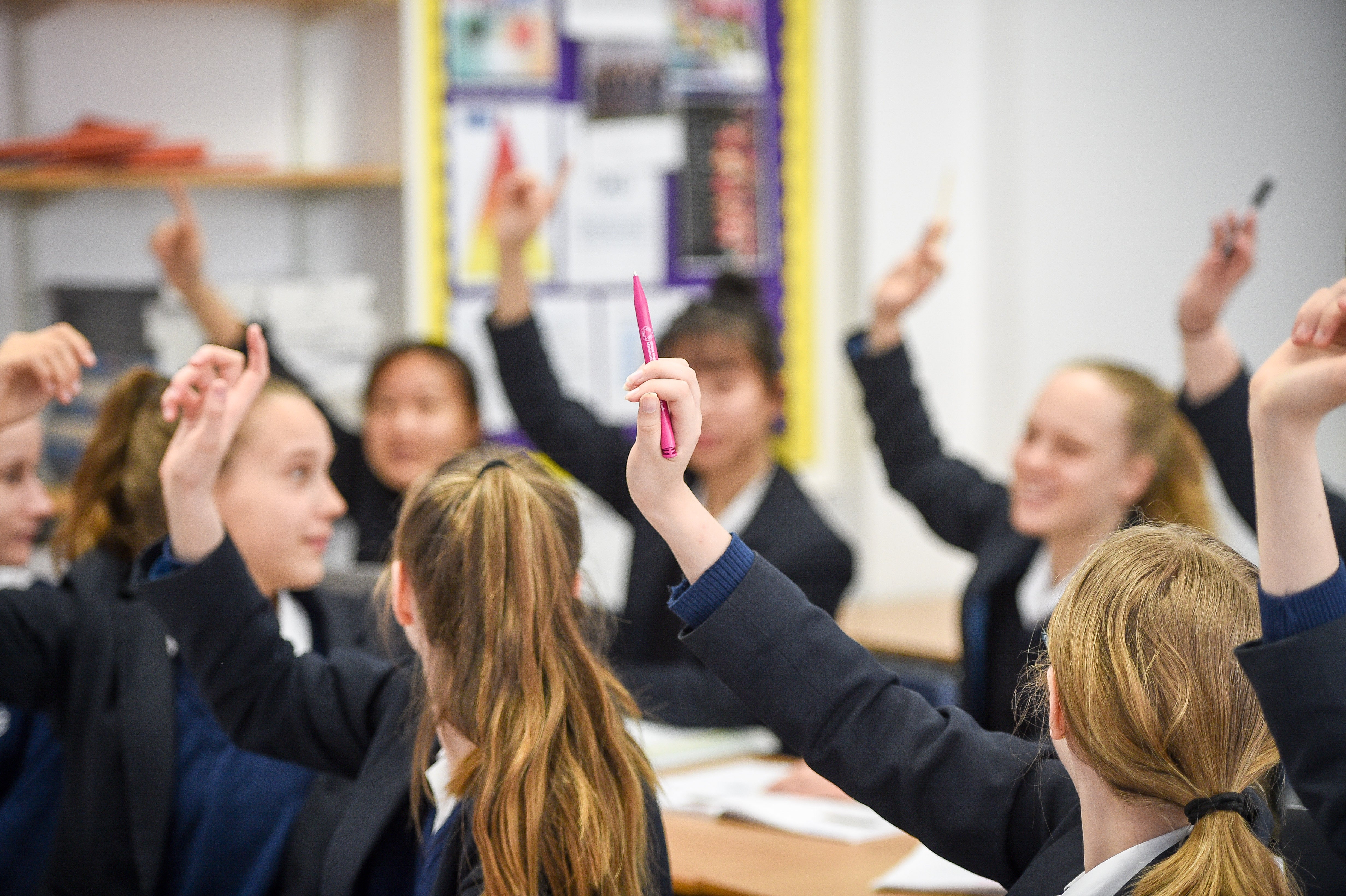Private school pupil numbers rise to record high
The Independent Schools Council census for January found there are 544,316 pupils at 1,388 ISC member schools.

Your support helps us to tell the story
From reproductive rights to climate change to Big Tech, The Independent is on the ground when the story is developing. Whether it's investigating the financials of Elon Musk's pro-Trump PAC or producing our latest documentary, 'The A Word', which shines a light on the American women fighting for reproductive rights, we know how important it is to parse out the facts from the messaging.
At such a critical moment in US history, we need reporters on the ground. Your donation allows us to keep sending journalists to speak to both sides of the story.
The Independent is trusted by Americans across the entire political spectrum. And unlike many other quality news outlets, we choose not to lock Americans out of our reporting and analysis with paywalls. We believe quality journalism should be available to everyone, paid for by those who can afford it.
Your support makes all the difference.The number of pupils who are privately educated has risen to a record high, according to new figures.
A census by the Independent Schools Council (ISC) for January 2022 found there are now a record 544,316 pupils at 1,388 ISC member schools, a 2% rise on the 2020 figures.
Every UK region has seen a boost in pupil numbers at independent schools, with the largest growth in the South West – a 3.6% rise.
The next highest rise was seen in the North West and Wales, where numbers had risen by 3% in both regions, and then the North East where there was a 2.5% increase.
The regions with the lowest rises were London (0.8%), Scotland (0.9%) and Yorkshire and the Humber (1.7%).
The census also shows the diversity of UK private schools is increasing, with 37.7% of pupils coming from an ethnic minority background in 2022 compared with 35.1% in 2021.
In total, 95,991 pupils were identified as having special educational needs and disabilities, equating to 17.6% of all pupils and an increase on last year.
The ISC said fee assistance had increased to nearly £1.2 billion, a rise of 4.8%.
However, just £480 million was provided on a means-tested basis, meaning most bursaries are not being awarded on the basis of family income, with just 6,000 pupils given full fee assistance.
The average worth of a means-tested bursary was £10,840 per annum, an increase of 5.9% compared with 2021. The ISC said its schools were also continuing to control fee increases, with an annual average rise of 3%.
ISC chairman Barnaby Lenon said: “Reassuringly, we have once again seen a rise in fee assistance provision, with the amount for means-tested fee assistance rising to a total of £480 million.”
He added that while partnership work between state and private schools had been disrupted during the pandemic, the census “tells us that more and more schools have been able to resume their joint working as restrictions and absence rates have become less pronounced”.
The data showed a slight decrease in the number of privately-educated pupils getting into Oxford or Cambridge, with 4.3% going to Oxbridge from the sector in 2022 compared with 5.3% the previous year.
Other universities in the Russell Group such as Exeter, Durham, Bristol, University College London and Nottingham also took fewer privately-educated pupils than the year before, according to the census.
In total, 5% of school leavers from the sector opted for a university overseas in 2022, with the USA the most popular destination.
The data also shows a slight rise in the number of all-girls’ schools, with 136 schools now exclusively for female pupils – up from 131.
Ninety-eight are all-boys’ schools, down from 102 the previous year.
Sir Peter Lampl, founder and chairman of the Sutton Trust and chairman of the Education Endowment Foundation, said: “It’s utterly disgraceful that out of the £1.2 billion of fee assistance only £480m is means-tested.
“This results in only 1% of pupils in independent schools getting free places which means that they are effectively closed.
“These schools need to be opened up and the way forward is our Open Access programme where all places are allocated on merit, not money, with funding provided by a combination of parents and the state.”